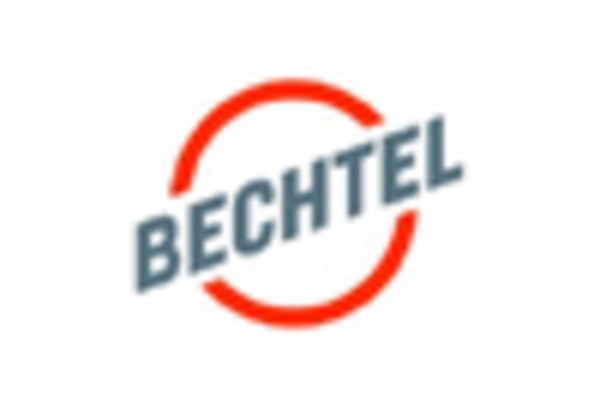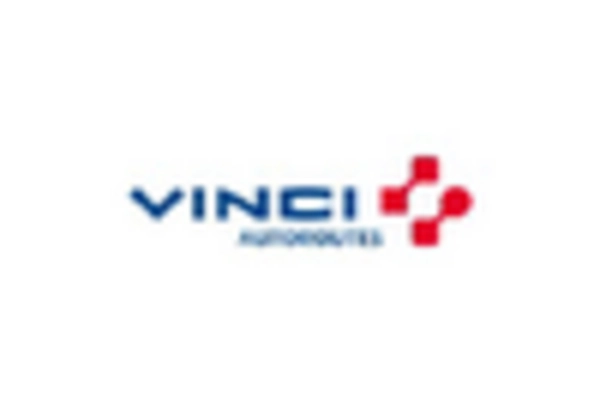Green Building Regulations
The implementation of stringent green building regulations is reshaping the construction market in the US. Local and state governments are increasingly adopting policies that mandate sustainable building practices, such as energy efficiency standards and the use of eco-friendly materials. For instance, the California Green Building Standards Code requires new residential buildings to meet specific energy performance criteria. These regulations not only promote environmental sustainability but also create opportunities for construction firms specializing in green technologies. As the demand for LEED-certified projects rises, the construction market is likely to witness a shift towards innovative building solutions that comply with these regulations, ultimately enhancing the market's competitiveness.
Urbanization and Housing Demand
Urbanization continues to be a driving force in the construction market, with more individuals migrating to urban areas in search of employment and lifestyle opportunities. According to recent data, urban populations in the US are projected to grow by approximately 2.5% annually, leading to heightened demand for residential and commercial construction. This trend necessitates the development of new housing units, office spaces, and retail establishments to accommodate the growing population. Consequently, the construction market is poised for expansion as developers respond to the increasing need for urban infrastructure. The focus on mixed-use developments and affordable housing solutions further underscores the importance of addressing urbanization challenges within the construction market.
Infrastructure Investment Growth
The construction market in the US is currently experiencing a surge in infrastructure investment, driven by federal and state initiatives aimed at modernizing aging facilities. The Biden administration's infrastructure plan allocates approximately $1.2 trillion for various projects, including roads, bridges, and public transit systems. This influx of funding is expected to stimulate demand within the construction market, leading to increased project activity and job creation. As states prioritize infrastructure upgrades, the construction market is likely to see a significant boost in both public and private sector investments. This trend not only enhances the quality of infrastructure but also supports economic growth, as improved transportation networks facilitate commerce and connectivity across regions.
Technological Advancements in Construction
Technological advancements are revolutionizing the construction market, with innovations such as Building Information Modeling (BIM), drones, and 3D printing gaining traction. These technologies enhance project efficiency, reduce costs, and improve safety on construction sites. For example, the adoption of BIM allows for better project visualization and collaboration among stakeholders, leading to fewer errors and delays. As construction firms increasingly integrate these technologies into their operations, the construction market is expected to experience enhanced productivity and streamlined processes. Furthermore, the potential for data analytics to inform decision-making could lead to more strategic investments in construction projects, ultimately shaping the future landscape of the industry.
Labor Shortages and Skilled Workforce Development
The construction market is currently grappling with labor shortages, which pose challenges to project timelines and overall productivity. As the demand for construction services rises, the need for a skilled workforce becomes increasingly critical. Various initiatives are being implemented to address this issue, including partnerships between educational institutions and construction firms to promote vocational training programs. These efforts aim to equip individuals with the necessary skills to thrive in the construction market. Additionally, the potential for increased wages and benefits may attract more workers to the industry, thereby alleviating some of the labor shortages. As the workforce evolves, the construction market must adapt to ensure a sustainable supply of skilled labor.

















Leave a Comment